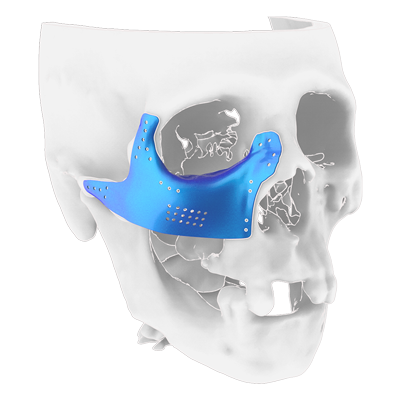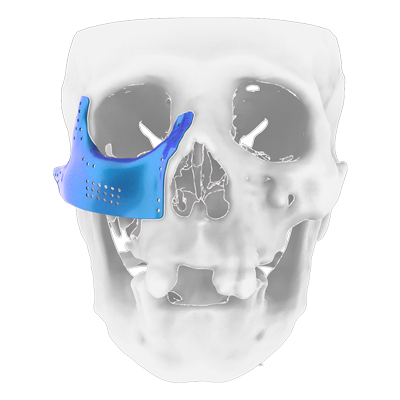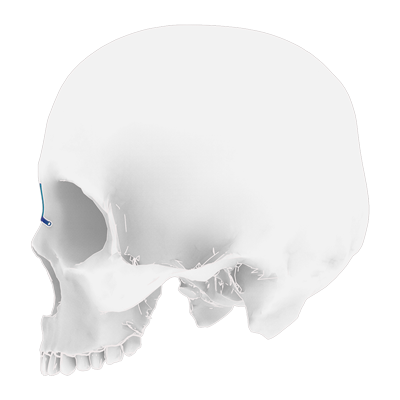Middle-third facial reconstruction
The reconstruction of the middle third facial fractures is a treatment that is performed mainly in patients who have been victims of trauma such as traffic or sports accidents, assaults or falls. The face is the part of the body that apart from being our business card, has multiple functionalities. The reconstruction of this area includes the malar bone, the orbital floor, the zygomatic arch and even the nostrils.
We develop custom titanium devices designed and manufactured with the latest 3D technologies for those patients who require reconstruction of the facial middle third such as malars, orbits and zygomatics. On the other hand, biomodels allow you virtual planning, reduce surgical times and better results.
Middle-third facial solutions
Titanium middle-third facial implants
Titanium solutions designed and manufactured in medical grade titanium, tailored for malar, orbital and zygomatic reconstructions.
Advantages of the Osteophoenix Middle-Third Facial Solution:
- It integrates seamlessly with the tissue.
- Technical support for the implant design. We have a team who will design along with the specialist the device to obtain the best results.
- Includes the biomodel and the surgical guides, as required.

Malar fractures
The malar bone corresponds to the cheekbone. Being a prominent area of the face can be seriously injured and easily fractured.
- Difficulty or pain when opening the mouth.
- Altering the position of the eye or its movements, decreased sight.
- Lack of feeling in the area around the fracture.
Among some of the effects that this type of fracture can produce:




Orbit floor fractures
This structure supports the eye and all the muscles involved with its movement. Generally, the fracture is due to the impact of an object against the eye or the eyelids, when exerting pressure on the eyeball, downward pressure is also produced and the floor of the orbit can be fractured.
- Double vision.
- The position of the eye can be altered.
- Loss of sensation in the area where the fracture has occurred.
Some of the consequences of this fracture are:


Zygomatic arch fractures
The zygomatic arch is in charge of joining the skull with the malar bone. Fractures of the zygomatic arch are usually linked to those of the orbital floor or the malar bone, although on certain occasions they can also be isolated fractures.
- Sinking of the side face.
- It can cause pain when opening the mouth.
- Incomplete opening of the mouth.
Some of the effects when it comes to an isolated fracture are:



Nasal fractures
The fractures that occur in this area can be very complex, depending on where specifically they occur, the direction and force of the impact.
- Pain and inflammation.
- Shortness of breath.
- Deformation of the nose.
Among the symptoms that can occur are:



Biomodels for the Reconstruction of the Facial Middle Third
Biomodels are anatomical models derived from a tomographic image of the patient, which allows to obtain a 3D image of the patient's initial situation. Biomodels help the surgeon to prepare the treatment, which would otherwise be more complicated or require more effort and time. Some advantages include convincing the patient to carry out the treatment and precise planning of the surgical procedure. Biomodels can be helpful in planning incisions and osteotomies. In addition, biomodels are clinically proven to reduce surgery times and therefore the patient exposure to anesthesia and blood loss.

